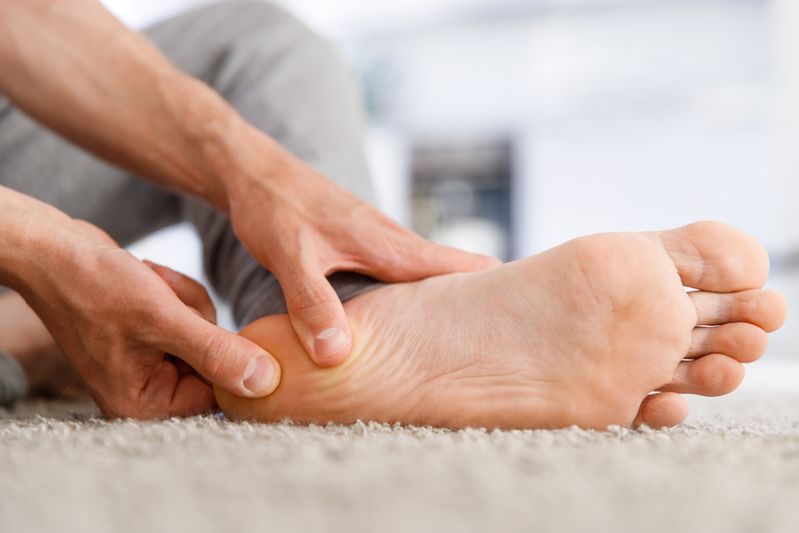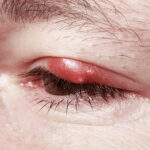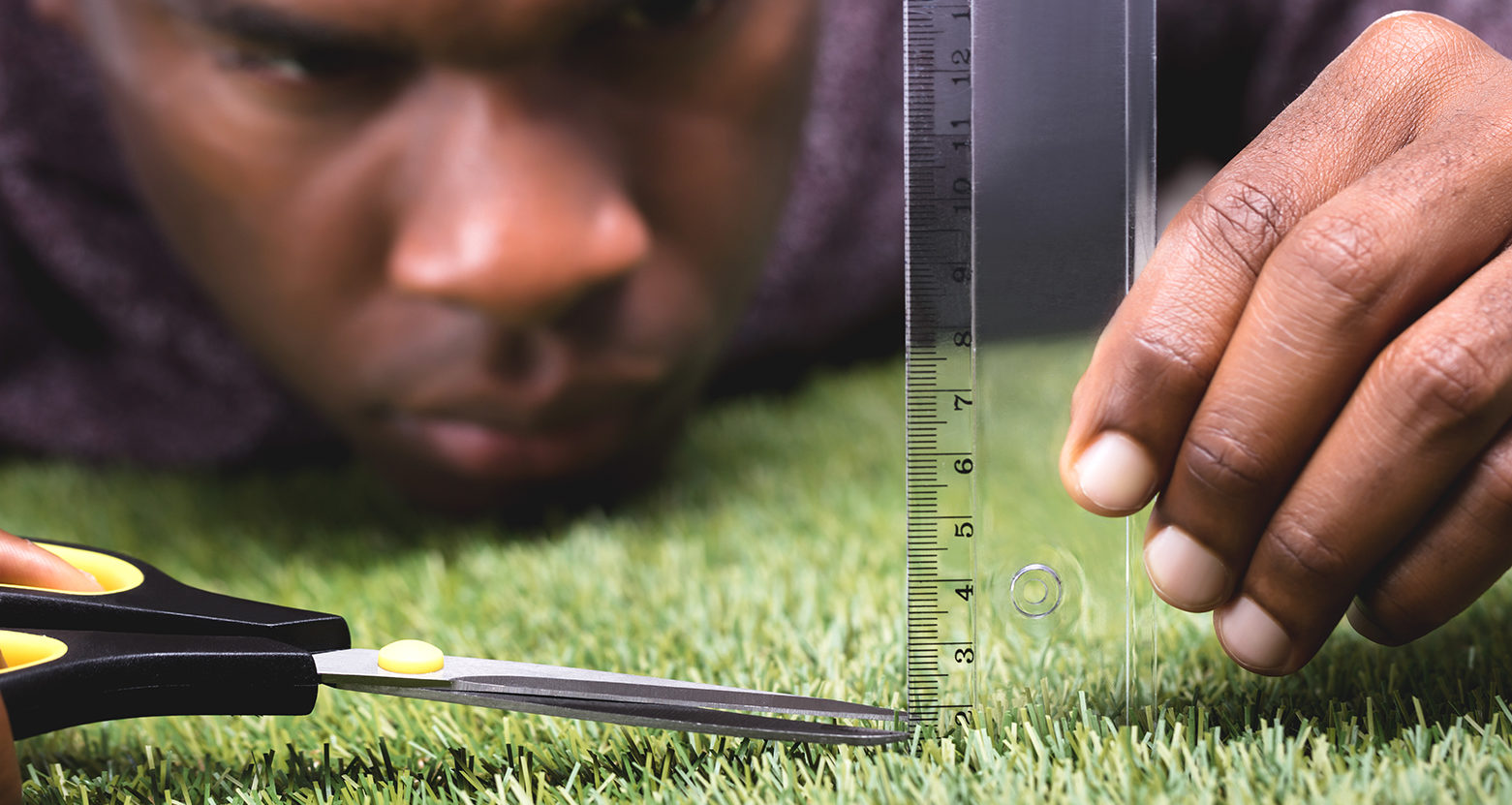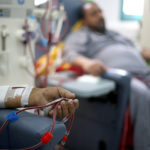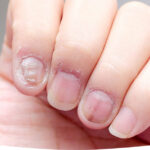Common Foot Problems: Causes and Conditions
Regarding common foot problems, did you know that daily activities such as walking, jumping, and running can subject the feet to various issues, leading to inflammation, strains, and injuries.
Foot pain is primarily caused by improper footwear, diabetes, and the natural aging process. Here is an overview of common foot diseases and disorders:
Bunions
Bunions are deformities where the big toe joint becomes misaligned, swollen, and tender. This condition causes the big toe to angle outward, while the second joint angles towards the other toes.
Although bunions are often hereditary, they can be exacerbated by wearing shoes that are too narrow in the forefoot and toe area. Surgery is a common treatment to correct severe bunions.
Hammertoe
Hammertoe is a condition where a toe bends into a claw-like position, often due to muscle imbalance. This typically affects the second toe, especially when a bunion forces the big toe towards and under it.
Wearing shoes and socks that do not constrict the toes can help alleviate pain and discomfort associated with hammertoe.
Heel Spurs
Heel spurs are bony growths on the underside of the heel bone. They develop when the plantar tendon pulls at its attachment point on the heel bone, leading to calcification and spur formation.
Proper warm-up exercises and wearing appropriate athletic shoes can help reduce ligament strain and prevent heel spurs.
Ingrown Toenails
Ingrown toenails occur when the corners or sides of the toenail grow into the surrounding skin, causing pain. This condition is often due to improper nail trimming but can also result from shoe pressure, injury, fungal infection, heredity, and poor foot structure.
Women are more prone to ingrown toenails than men. Prevention includes trimming toenails straight across, choosing proper shoe styles and sizes, and addressing foot pain promptly.
Neuroma
Neuromas are benign nerve growths, typically found between the third and fourth toes. They arise when tissue irritates the nerves, often due to ill-fitting shoes or abnormal bone structure.
Treatment options vary depending on severity and can include orthotics (shoe inserts), cortisone injections, and, in extreme cases, surgical removal of the growth.
Plantar Fasciitis
Plantar fasciitis is an inflammation on the bottom of the foot that leads to heel and/or arch pain. It can be caused by various foot injuries or improper foot mechanics.
Treatments range from icing and foot exercises to the prescription of custom orthotics to correct foot position and alleviate pain.
Sesamoiditis
Sesamoiditis is the inflammation or rupture of the two small bones (sesamoids) under the first metatarsal bone. Proper shoe selection and orthotics can help manage this condition.
Shin Splints
Shin splints cause pain on either side of the leg bone due to muscle or tendon inflammation. They are related to excessive foot pronation or muscle imbalance in the leg. Proper stretching before and after exercise and corrective orthotics for pronation can help prevent shin splints.

Stress Fractures
Stress fractures are incomplete cracks in the bone caused by overuse. With complete rest, stress fractures in toes or any bones of the foot heal quickly. Extra padding in shoes can help prevent the condition. Left untreated, stress fractures may become complete bone fractures, requiring casting and immobilization.
Blisters
Most blisters on the feet are caused by friction and do not require medical attention. New skin forms underneath the affected area, and the fluid in the blister is absorbed back into the tissue.
Ordinary blisters can be soothed with Vitamin E ointment or an aloe-based cream. If the fluid is white or yellow, the blister is infected and needs medical attention.
Corns and Calluses
Corns and calluses are protective layers of compacted, dead skin cells caused by repeated friction from skin rubbing against bony areas or irregularities in a shoe. Corns typically form on the toes, while calluses form on the soles of the feet.
The friction and pressure can be painful and may be relieved by moleskin or padding. Never cut corns or calluses with any instrument, and never apply home remedies without a podiatrist’s instructions.
Fungal Infections
Fungal infections, including athlete’s foot and fungal nails, are common foot problems. Fungi thrive in dark, warm, moist areas, such as between toes and on toenails. These infections can result from environmental factors like socks, shoes, heat, and humidity, or weakened immunity due to conditions like diabetes.
Chronic fungal infections are more common in adults, while acute infections are seen more often in children.
Osteoporosis
A stress fracture in the foot is often the first sign of osteoporosis. To prevent osteoporosis, slow its progression, and protect yourself from fractures, include adequate amounts of calcium and vitamin D in your diet and exercise regularly.
Foot Odor
Feet and hands contain more sweat glands than any other part of the body. Foot odor results from the interaction between perspiration and bacteria that thrive in shoes and socks. To reduce foot odor, address both sweating and footwear.
Smelly feet can also be caused by hyperhidrosis, an inherited condition of excessive sweating, primarily affecting males. Stress, certain medications, fluid intake, and hormonal changes can also increase perspiration.
SEE ALSO: Foods To Make Bones Stronger
Causes of Common Foot Problems
Foot problems can arise from a variety of causes, including improper footwear, physical activity, medical conditions, and genetic predispositions. Here are the causes of some common foot problems:
Bunions
- Heredity
- Wearing shoes that are too narrow in the forefoot and toe area
Hammertoe
- Muscle imbalance
- Bunions pushing the big toe toward and under the second toe
- Wearing shoes and socks that cramp the toes
Heel Spurs
- Plantar tendon pulling at its attachment point on the heel bone
- Improper warm-up exercises
- Wearing inappropriate athletic shoes
Ingrown Toenails
- Improper nail trimming
- Shoe pressure
- Injury
- Fungal infection
- Heredity
- Poor foot structure
Neuroma
- Tissue rubbing against and irritating nerves
- Pressure from ill-fitting shoes
- Abnormal bone structure
Plantar Fasciitis
- Foot injuries
- Improper foot mechanics
- Overuse or strain on the plantar fascia
- Wearing unsupportive shoes
Sesamoiditis
- Inflammation or rupture of the sesamoid bones under the first metatarsal bone
- Wearing improper shoes
- Overuse
Shin Splints
- Excessive foot pronation
- Muscle imbalance in the leg
- Inadequate stretching before and after exercise
Stress Fractures
- Overuse and repetitive stress
- Insufficient rest and recovery
- Inadequate footwear or padding
Blisters
- Friction from shoes or socks
- New or ill-fitting shoes
- Moisture and heat buildup
Corns and Calluses
- Repeated friction from skin rubbing against bony areas or shoes
- Wearing ill-fitting shoes
- Abnormal foot structure
Fungal Infections (Athlete’s Foot and Fungal Nails)
- Dark, warm, moist environments (socks and shoes)
- Poor foot hygiene
- Weakened immunity (e.g., due to diabetes)
Osteoporosis
- Low calcium and vitamin D intake
- Lack of weight-bearing exercise
- Genetic predisposition
- Hormonal changes, especially in postmenopausal women
Foot Odor
- Excessive sweating
- Wearing shoes without adequate ventilation
- Bacteria thriving in warm, moist environments
- Hyperhidrosis (inherited condition of excessive sweating)
- Stress, certain medications, and hormonal changes
Understanding these causes can help in the prevention and management of foot problems, ensuring better foot health and comfort.
How Foot Problems Are Diagnosed
Podiatrists employ a range of diagnostic and treatment methods to address foot problems:
- Consultation and Prevention: They consult with patients and collaborate with other physicians to devise strategies for preventing foot problems.
- Diagnosis and Treatment: They diagnose and treat a variety of conditions including tumors, ulcers, fractures, skin and nail diseases, and deformities.
- Surgical Interventions: Podiatrists perform surgeries to correct issues such as bunions, claw toes, fractures, hammertoes, infections, and ruptured Achilles tendons, as well as other ligament and tendon injuries.
- Therapies and Diagnostics: They prescribe therapies and perform diagnostic procedures, including ultrasound and lab tests.
- Orthotics: Podiatrists prescribe or fit patients with orthotic inserts to correct walking patterns and alleviate pain.
- Conditions Treated: They treat a wide range of conditions such as bone disorders, bunions, corns, calluses, cysts, heel spurs, infections, ingrown nails, and plantar fasciitis.
When to Seek Medical Care for Foot Pain
If you experience any of the following symptoms, it is important to contact a podiatrist for a thorough evaluation and treatment:
- Persistent Pain: Ongoing pain in your feet or ankles.
- Changes in Nails or Skin: Alterations in the appearance of your nails or skin on the foot.
- Severe Cracking or Peeling: Noticeable cracking, scaling, or peeling on the heel or foot.
- Blisters: Presence of blisters, particularly if there are signs of bacterial infection such as:
- Increased pain, swelling, redness, tenderness, or warmth.
- Red streaks extending from the affected area.
- Discharge or pus.
- Non-Responsive Symptoms: Foot or ankle issues that do not improve after two weeks of treatment with over-the-counter products.
- Spreading Infection: Infection that spreads from one area of the foot to another, including under the nail bed, the skin under the nail, the nail itself, or the surrounding skin.
- Thickening Toenails: Thick toenails that cause discomfort.
- Heel Pain: Heel pain accompanied by fever, redness (sometimes warmth), or numbness, or tingling in the heel, persistent heel pain without weight-bearing.
- Pain Unresponsive to OTC Treatment: Pain that is not alleviated by ice or over-the-counter painkillers (such as aspirin, ibuprofen, or acetaminophen).
- Diabetic Concerns: Diabetics with poor circulation who develop athlete’s foot.
If you encounter any of these symptoms, please contact our office for a professional evaluation and appropriate treatment.
Treatments for Common Foot Problems
Various treatments are available for common foot problems, ranging from conservative measures to surgical interventions. Here is an overview of treatments for each condition:
Bunions
- Wearing wider, more comfortable shoes
- Padding and taping the foot
- Custom orthotic devices
- Anti-inflammatory medications
- Surgery to correct severe deformities
Hammertoe
- Wearing shoes with a roomy toe box
- Toe exercises to stretch and strengthen the muscles
- Padding to reduce friction and pressure
- Custom orthotics
- Surgery in severe cases
Heel Spurs
- Proper warm-up exercises
- Stretching exercises
- Using appropriate athletic shoes
- Orthotic devices to reduce strain on the plantar fascia
- Anti-inflammatory medications
- Surgery in severe cases
Ingrown Toenails
- Soaking the foot in warm water
- Proper nail trimming techniques
- Wearing properly fitting shoes
- Antibiotics for infection
- Minor surgical procedures to remove part of the nail
Neuroma
- Wearing shoes with a wide toe box
- Custom orthotics to reduce pressure on the affected nerve
- Anti-inflammatory medications
- Cortisone injections
- Surgical removal of the growth in severe cases
Plantar Fasciitis
- Rest and icing
- Stretching exercises
- Custom orthotics to support the arch
- Anti-inflammatory medications
- Physical therapy
- Cortisone injections
- Surgery in persistent cases
Sesamoiditis
- Rest and avoiding activities that aggravate the pain
- Ice application
- Wearing appropriate footwear
- Orthotics to reduce pressure on the sesamoids
- Anti-inflammatory medications
Shin Splints
- Rest and ice
- Stretching and strengthening exercises
- Wearing proper footwear
- Custom orthotics to correct pronation
- Anti-inflammatory medications
Stress Fractures
- Complete rest and avoiding weight-bearing activities
- Protective footwear or casting
- Gradual return to activity with proper footwear
- Increased padding in shoes
Blisters
- Reducing friction with moleskin or padding
- Keeping feet dry
- Using foot powders or moisture-wicking socks
- Applying Vitamin E ointment or aloe-based cream for healing
- Seeking medical attention for infected blisters
Corns and Calluses
- Wearing properly fitting shoes
- Using padding or moleskin to reduce friction
- Soaking feet in warm water to soften the skin
- Gently filing the corns or calluses with a pumice stone
- Seeking podiatrist’s help for severe cases
- Avoiding self-treatment with sharp instruments
Fungal Infections (Athlete’s Foot and Fungal Nails)
- Keeping feet clean and dry
- Using antifungal creams or powders
- Wearing moisture-wicking socks
- Avoiding walking barefoot in public areas
- Prescription antifungal medications for severe cases
Osteoporosis
- Ensuring adequate intake of calcium and vitamin D
- Weight-bearing exercises
- Medications to strengthen bones
- Regular bone density monitoring
Foot Odor
- Keeping feet clean and dry
- Using antiperspirants or foot powders
- Wearing breathable shoes and moisture-wicking socks
- Changing socks regularly
- Using antibacterial soap
- Addressing hyperhidrosis with appropriate treatments
These treatments can help manage and alleviate symptoms, promote healing, and prevent further complications. For persistent or severe foot problems, consulting a podiatrist or healthcare professional is essential for proper diagnosis and tailored treatment.

A graduate of Computer Science and Information Management Technology. Diploma – Caregiving, Certificates – Dementia and Diabetes Awareness and Management. A researcher, blogger, songwriter, singer and acoustic guitarist. Born in an environment where natural talents such as healing are imparted at our natural birth. This natural talents of healing is the result of our genetic inheritance and the training from family environment.

